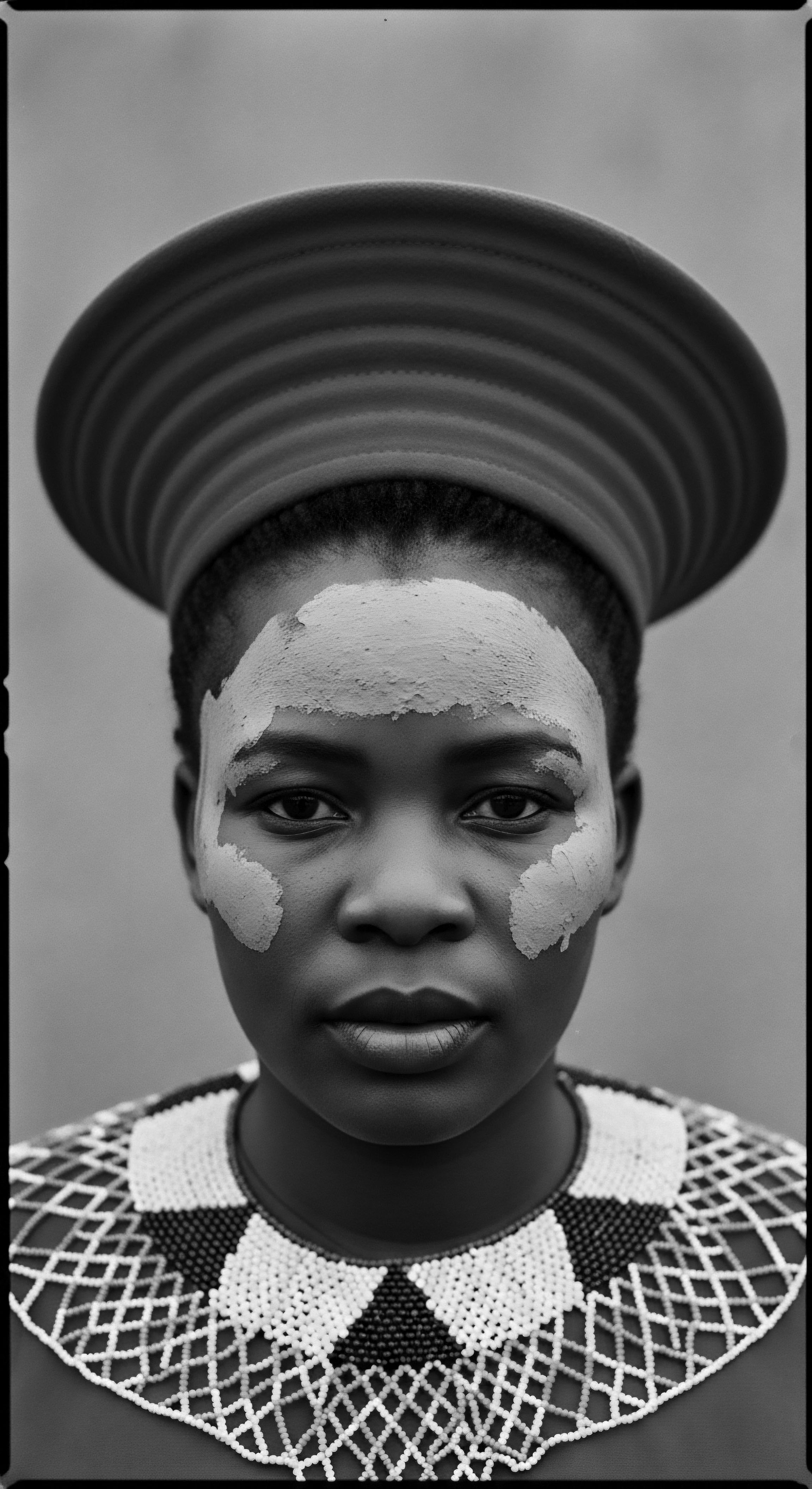
Fundamentals
The notion of ‘Ancient Cosmetics’ reaches far beyond mere superficial adornment; it represents a profound connection to the Earth’s bounty and the wisdom of ancestral communities, particularly those with textured hair. At its core, this concept encompasses the traditional preparations and practices employed for hair and scalp care long before the advent of modern chemical formulations. It speaks to a heritage where beauty rituals were interwoven with spiritual beliefs, social status, and communal bonds. These practices, often passed down through generations, reveal a deep understanding of natural elements and their capacity to nurture, protect, and express identity.
The elemental understanding of hair care in antiquity centered on the use of what nature freely offered. This included a spectrum of plant-based oils, rich butters, mineral-laden clays, and potent herbs. The application of these materials was rarely a solitary act; instead, it frequently involved communal gatherings, a tender exchange of care that strengthened familial and societal ties. Such rituals provided not only physical sustenance for the hair but also spiritual and cultural nourishment for the individual and the collective.
Ancient Cosmetics are the timeless expressions of self-care and cultural identity, rooted in the natural world and ancestral wisdom, particularly for textured hair.
A fundamental aspect of these early cosmetic traditions for textured hair was their adaptive nature. Communities across diverse climates and topographies discovered and refined local ingredients to suit their specific hair needs and environmental conditions. For instance, in arid regions, the emphasis might have been on intense moisture retention, while in humid areas, practices focused on protection and scalp health. This adaptability underscores a practical and intuitive scientific approach, long before formalized scientific inquiry took hold.
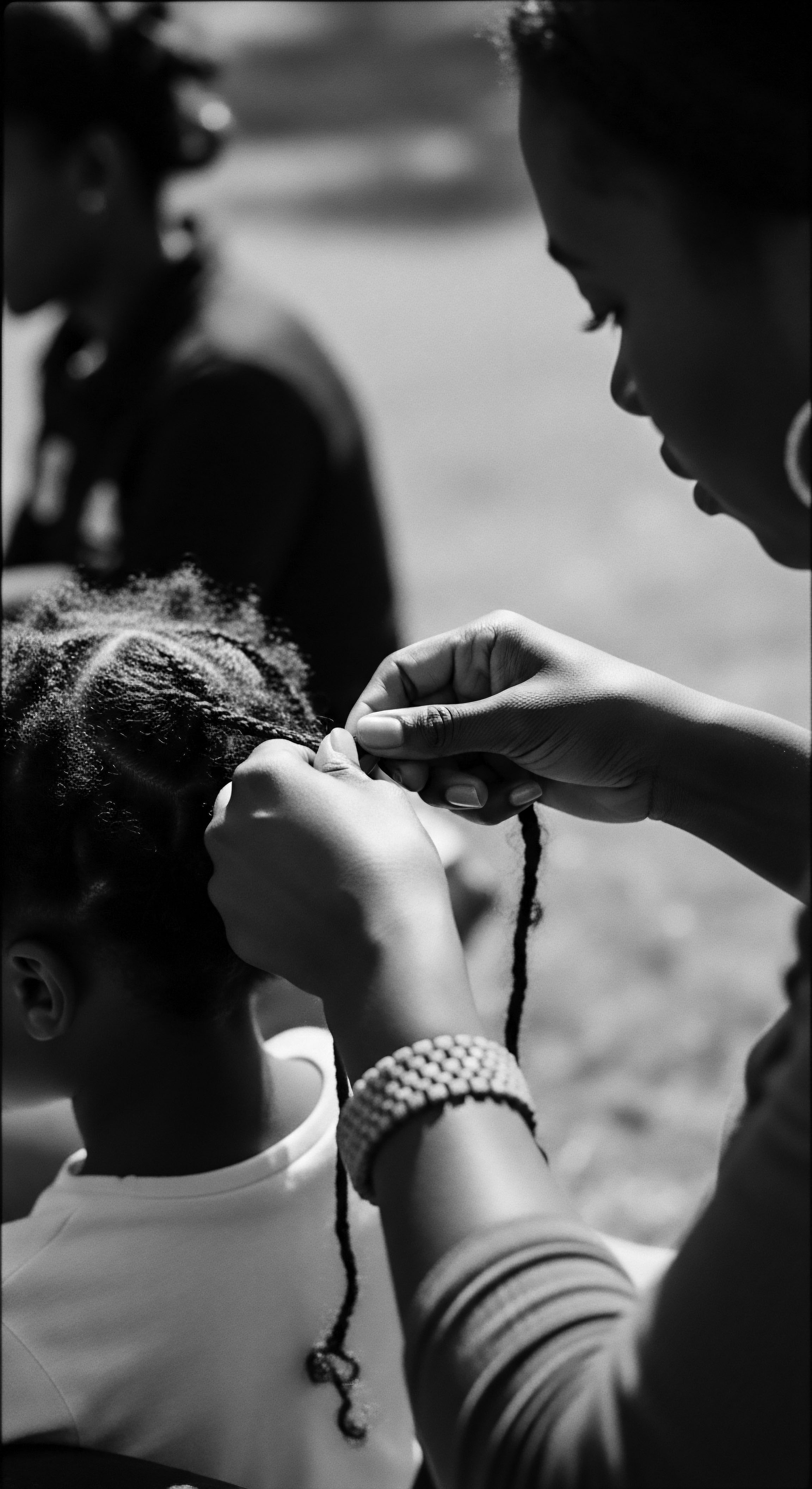
The Source of Early Preparations
The primary components of Ancient Cosmetics for textured hair were drawn directly from the surrounding natural world. These natural ingredients served as the bedrock of hair care regimens, providing both cleansing and conditioning properties.
- Plant Oils ❉ Derived from seeds, nuts, and fruits, these oils, such as shea butter, palm oil, and various tree nut oils, offered deep hydration and a protective barrier against environmental stressors. They were often warmed and massaged into the scalp and strands.
- Clays and Earths ❉ Mineral-rich clays, like kaolin or specific ochres, were used for cleansing the scalp, drawing out impurities, and providing a protective coating for hair. They often mixed with water or oils to form a paste.
- Herbal Infusions ❉ Various leaves, barks, and roots were steeped in water or oils to create infusions or decoctions, lending their medicinal and conditioning properties to the hair. These might include plants known for their strengthening or soothing qualities.
The careful selection and preparation of these natural resources highlight an intimate knowledge of local botany and its benefits. This foundational understanding laid the groundwork for complex hair care systems that supported the unique structure and needs of textured hair, ensuring its health and vitality across generations.

Intermediate
Moving beyond the foundational understanding, the intermediate meaning of ‘Ancient Cosmetics’ for textured hair unveils a more intricate interplay of botanical science, communal ritual, and deep cultural significance. It is not merely about what was used, but how these elements were meticulously applied within specific cultural frameworks to preserve, adorn, and communicate. These practices reflect an early form of ethnobotanical science, where observations of plant properties were honed over centuries, yielding highly effective, albeit uncodified, hair care systems.
The methods employed in these ancient traditions were often labor-intensive, requiring patience and collective effort. This communal aspect elevated hair care from a solitary chore to a shared experience, strengthening social bonds and transmitting ancestral wisdom. Mothers taught daughters, elders guided the youth, and these shared moments solidified cultural identity. The tactile experience of working with natural ingredients, the aromatic profiles of the plant compounds, and the rhythmic movements of styling all contributed to a holistic sense of wellbeing, connecting the individual to their lineage and their environment.
The deeper meaning of Ancient Cosmetics lies in their sophisticated blend of natural science, communal artistry, and the profound communication of identity through textured hair.
Consider the preparation of ancient hair formulations. These were not mass-produced; rather, they were often freshly prepared, ensuring potency and purity. The grinding of seeds, the blending of butters, and the infusion of herbs were acts of creation, imbued with intention and knowledge passed through spoken word and embodied practice. This hands-on approach ensured a deep connection to the ingredients and a nuanced understanding of their effects on diverse textured hair patterns.
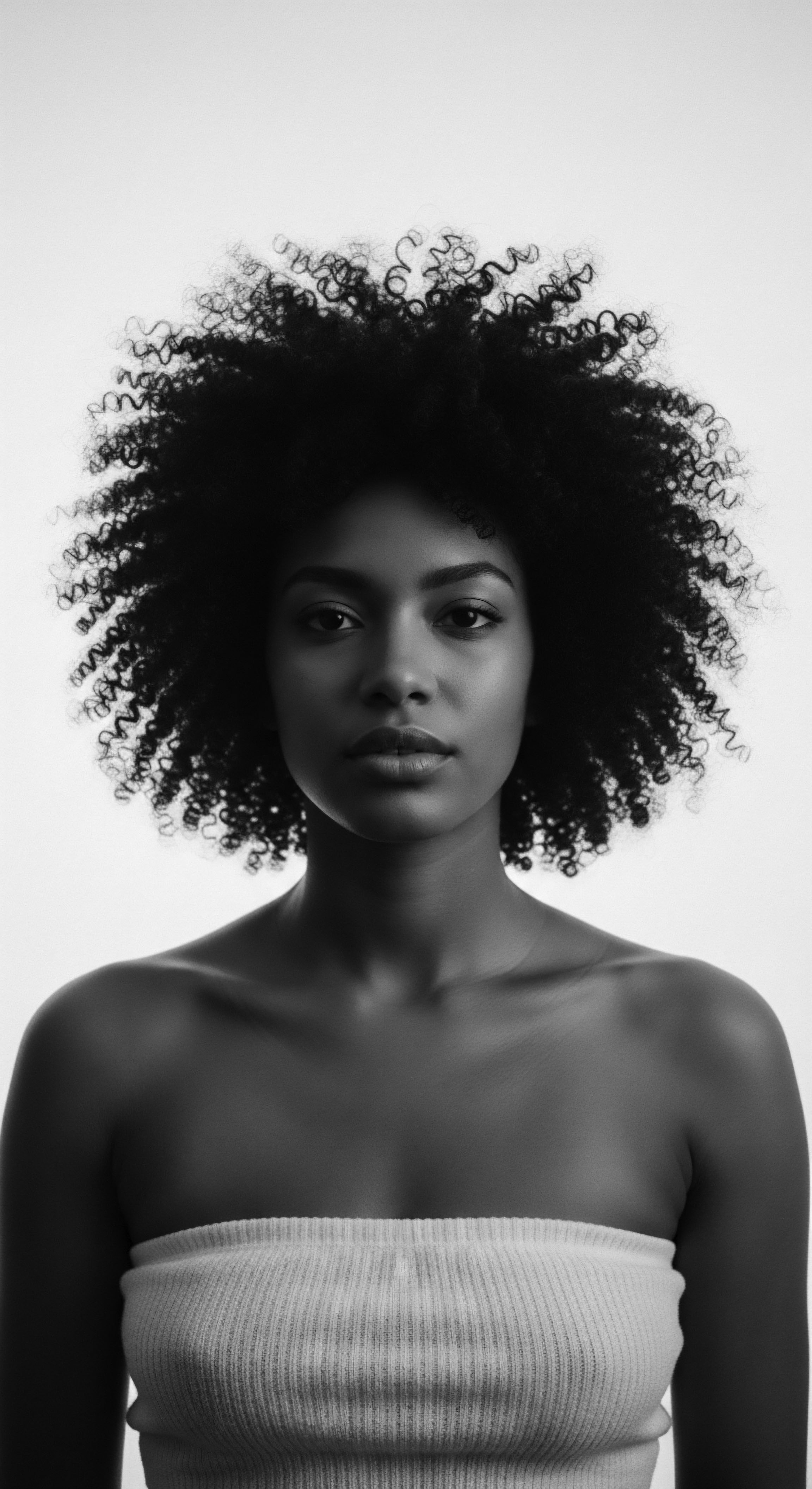
The Science of Ancestral Care
While not articulated in modern scientific terms, the effectiveness of Ancient Cosmetics for textured hair can be understood through contemporary scientific lenses. The natural oils and butters provided emollients that coated the hair shaft, reducing moisture loss and preventing breakage, a particular concern for coily and curly strands. Herbal ingredients often possessed antimicrobial, anti-inflammatory, or conditioning properties, contributing to scalp health and hair strength.
The mechanical actions of ancient grooming, such as careful detangling with wide-toothed combs crafted from wood or bone, or the precise sectioning and braiding of hair, minimized stress on delicate hair strands. These practices worked in concert with the natural ingredients to maintain length and promote overall hair vitality. The understanding that manipulation could lead to breakage, and that moisture was paramount for textured hair, was deeply embedded in these traditional methods.
| Ancient Cosmetic Ingredient Shea Butter (Vitellaria paradoxa) |
| Traditional Application/Benefit (Heritage Context) Deeply moisturizes, protects from sun and harsh climates, facilitates braiding. |
| Modern Scientific Understanding/Analogue Rich in fatty acids (oleic, stearic) and vitamins A & E; acts as an occlusive emollient, reducing transepidermal water loss. Similar to modern hair balms or deep conditioners. |
| Ancient Cosmetic Ingredient Palm Oil (Elaeis guineensis) |
| Traditional Application/Benefit (Heritage Context) Nourishes scalp and hair, provides conditioning, used in traditional soaps. |
| Modern Scientific Understanding/Analogue Contains vitamin E and beta-carotene; a good source of saturated and unsaturated fatty acids, offering conditioning and emollient properties. Often found in natural hair cleansers and conditioners. |
| Ancient Cosmetic Ingredient Aloe Vera (Aloe barbadensis miller) |
| Traditional Application/Benefit (Heritage Context) Soothes scalp, provides hydration, aids in healing minor irritations. |
| Modern Scientific Understanding/Analogue Contains enzymes, vitamins, minerals, and amino acids; offers humectant properties, drawing moisture to the hair and scalp, with anti-inflammatory benefits. Comparable to modern scalp treatments or hydrating gels. |
| Ancient Cosmetic Ingredient Chebe Powder (Croton zambesicus blend) |
| Traditional Application/Benefit (Heritage Context) Strengthens hair shaft, reduces breakage, promotes length retention. |
| Modern Scientific Understanding/Analogue Composed of various plant materials (e.g. Croton zambesicus, Mahllaba Soubiane, cloves) that coat the hair, providing lubrication and reducing friction, thus minimizing mechanical breakage. Similar to modern hair fortifiers or protective styling aids. |
| Ancient Cosmetic Ingredient These ancient remedies, honed over millennia, offer profound lessons for contemporary textured hair care, validating ancestral wisdom through modern scientific lens. |
The deliberate choice of ingredients and methods highlights an intuitive understanding of the specific needs of textured hair. The tightly coiled or intricately curled patterns of Black and mixed-race hair, while beautiful, are also prone to dryness and breakage if not handled with specialized care. Ancient Cosmetics addressed these specific characteristics through practices that emphasized moisture, protection, and gentle handling, ensuring the vitality of these hair types.

The Tender Thread of Community
Beyond the physical application, the preparation and use of Ancient Cosmetics were deeply embedded in the social fabric of communities. Hair care sessions were often intergenerational, providing spaces for storytelling, teaching, and bonding. This communal aspect meant that knowledge was not simply transferred but lived and shared, strengthening cultural identity and reinforcing the value of collective care.
The act of styling hair, whether through intricate braiding, twisting, or locing, was a social ritual. It was a time for women to gather, share experiences, and reinforce their connections. This collective engagement in hair care fostered a sense of belonging and continuity, linking individuals to a long lineage of ancestors who also engaged in these meaningful practices. The beauty of the styles created was a reflection of the beauty of the community itself.
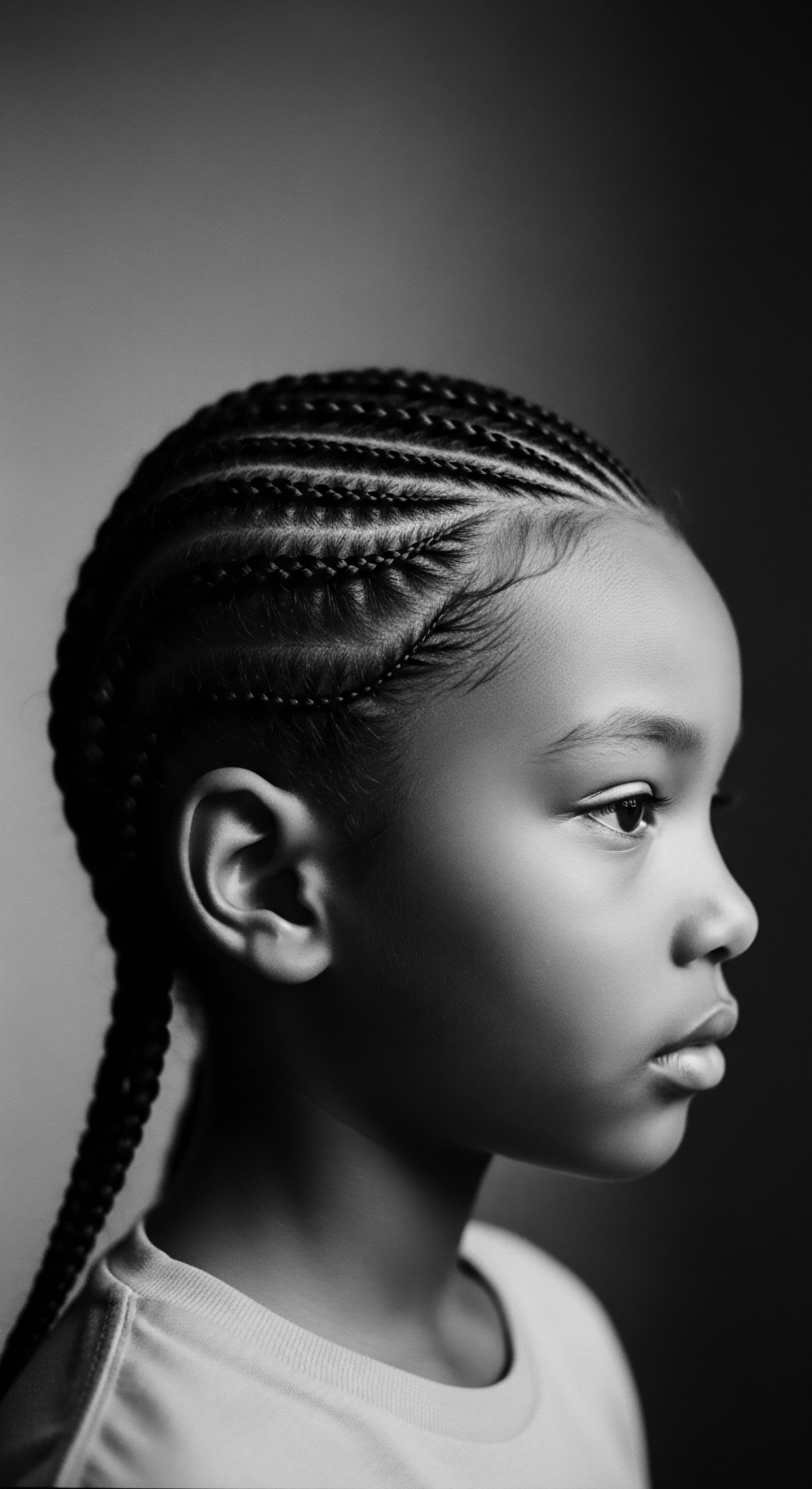
Academic
The academic delineation of ‘Ancient Cosmetics,’ particularly in the context of textured hair heritage, transcends a simple historical accounting of ingredients and practices. It represents a complex, multi-layered phenomenon rooted in ethnobotanical wisdom, socio-cultural anthropology, and the lived experiences of Black and mixed-race communities across millennia. This definition asserts that Ancient Cosmetics are not merely antiquated beauty products but sophisticated systems of care, identity articulation, and cultural preservation, deeply informed by indigenous knowledge systems and the unique biological characteristics of textured hair. The meaning extends to the resilience of these practices, often surviving immense historical disruptions, such as the transatlantic slave trade, to maintain their significance in diasporic communities.
A rigorous examination reveals that these ancient practices were often localized pharmacopeias, utilizing regionally specific flora and fauna to address hair and scalp health. The efficacy of these traditional remedies, though developed empirically, finds validation in contemporary cosmetic science. For instance, the use of various plant mucilages, oils rich in polyunsaturated fatty acids, and mineral-laden clays provided benefits such as moisture retention, strengthening of the hair shaft, and scalp detoxification.
These benefits are particularly pertinent for textured hair, which, due to its helical structure and lower density of cuticle cells, is inherently more susceptible to dryness and breakage compared to straight hair types (Loussouarn & Rawadi, 2005). The application methods, often involving extensive braiding, twisting, or protective wraps, minimized mechanical stress and environmental exposure, thereby preserving hair length and integrity.
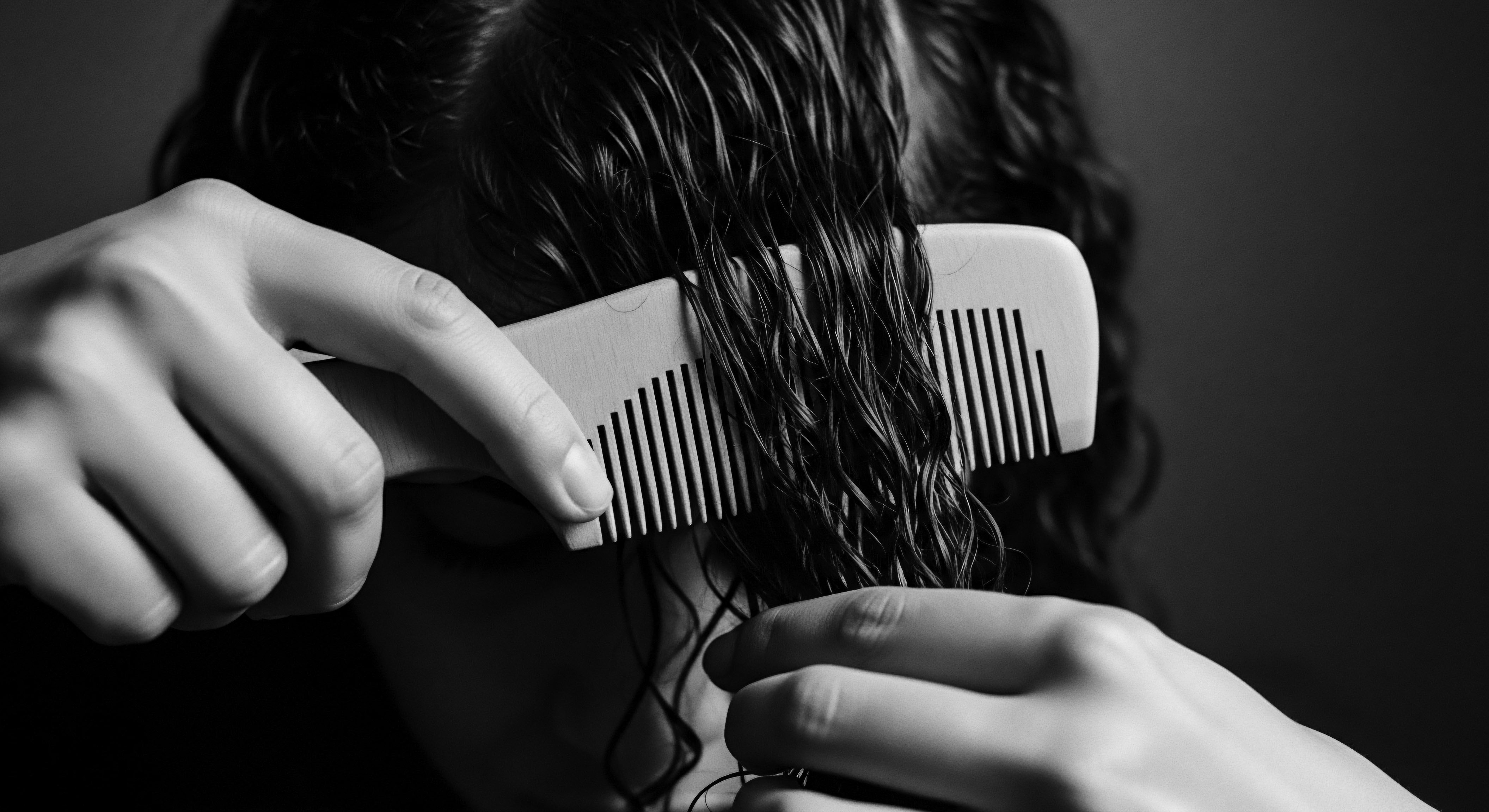
Ethnobotanical Ingenuity and Cultural Persistence
The continuity of these practices, despite centuries of attempts to erase or devalue Black hair traditions, stands as a testament to their intrinsic value and cultural embeddedness. The imposition of Eurocentric beauty standards during colonial periods and slavery sought to dismantle these heritage practices, often associating natural textured hair with savagery or lack of civilization (Akanmori, 2015). Yet, ancestral knowledge persisted, often in clandestine forms, transmitted through oral tradition and embodied rituals within families and communities. This resilience underscores hair as a site of resistance and cultural memory.
One compelling case study that powerfully illuminates the Ancient Cosmetics’ connection to textured hair heritage and ancestral practices is the enduring use of Chebe Powder by the Basara women of Chad. For thousands of years, women in this nomadic ethnic group have employed a unique blend of local herbs, including the seeds of the Croton zambesicus plant, Mahllaba Soubiane (cherry kernels), cloves, resin, and stone scent, ground into a fine powder (Petersen, 2022). This preparation, mixed with oils or butters, is applied to damp, sectioned hair and then braided, often left in place for days. The practice is not aimed at stimulating hair growth from the scalp but rather at preventing breakage and retaining length by coating and strengthening the hair shaft, improving moisture retention, and reducing split ends.
The longevity of Chebe powder use among Basara women exemplifies Ancient Cosmetics as a living heritage, prioritizing hair length retention through protective coating rather than direct growth stimulation.
This traditional method, passed down through generations, has allowed Basara women to achieve remarkable hair lengths, often extending past their waist, a visual symbol of beauty, womanhood, and fertility within their culture (Chrisam Naturals, 2024). The scientific basis for Chebe’s effectiveness lies in its ability to seal moisture into the hair cuticle, reducing friction and environmental damage, which are primary causes of breakage in highly textured hair. The components, rich in fatty acids, proteins, and antioxidants, fortify the hair’s outer layer, making strands more resilient (Michaels, 2023). This ancient practice, now gaining global recognition, demonstrates how empirical ancestral knowledge directly addressed the unique biological needs of textured hair, fostering its health and enabling its expression as a cultural marker.
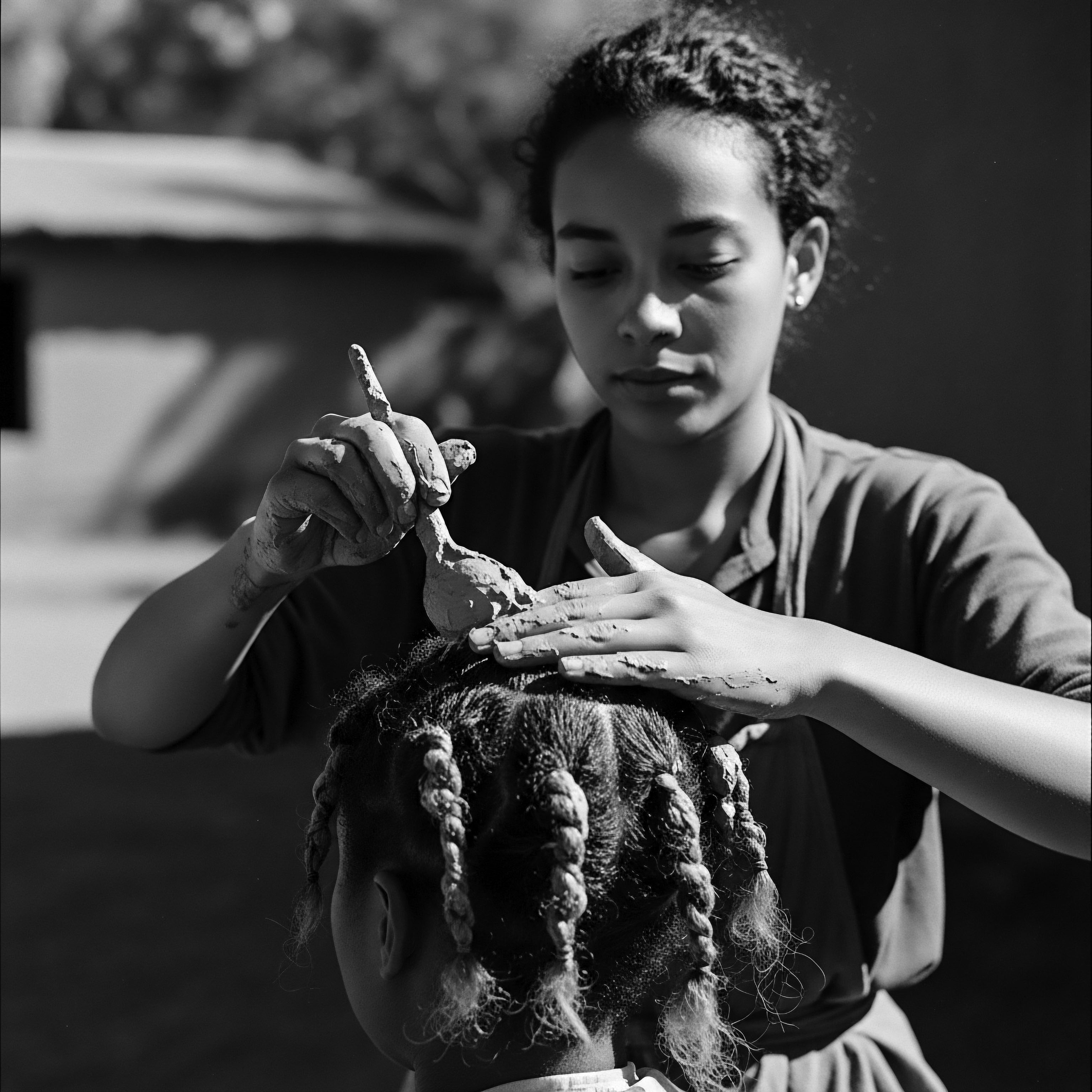
The Unbound Helix ❉ Identity and Self-Determination
The deeper meaning of Ancient Cosmetics extends into the realm of identity and self-determination. Hair, particularly textured hair, has historically served as a potent canvas for expressing social status, spiritual beliefs, tribal affiliation, and personal identity within African and diasporic communities (Akanmori, 2015; Afriklens, 2024). The intricate patterns of braids, the sculpting of coils, and the adornment with shells or beads were not merely aesthetic choices; they were narratives etched into the very strands of one’s being, communicating complex messages without words.
The deliberate cultivation of specific hair textures and styles using ancient cosmetic preparations represented an affirmation of self and community. This contrasts sharply with later periods where assimilation pressures often led to the chemical alteration of textured hair, a practice that, while offering temporary conformity, frequently resulted in damage and a disconnect from ancestral aesthetics (Thompson, 2009; Byrd & Tharps, 2014). The re-emergence of interest in Ancient Cosmetics today, particularly within the natural hair movement, signifies a reclaiming of this heritage, a conscious choice to honor the wisdom of those who came before.
This academic interpretation posits that Ancient Cosmetics offer a framework for understanding hair care as a practice of embodied heritage. It is a dialogue between the biological realities of textured hair, the ecological knowledge of specific environments, and the enduring cultural values of communities. The long-term success of these practices, as evidenced by the sustained hair health and cultural continuity observed in communities like the Basara, speaks to a profound and holistic approach to beauty and wellness that modern systems often overlook.
The examination of Ancient Cosmetics also compels us to consider the ethical implications of contemporary beauty industries. Many traditional ingredients and practices are now being commercialized, raising questions about equitable benefit sharing and cultural appropriation. A truly academic understanding requires acknowledging the origins of this knowledge, respecting the communities who preserved it, and advocating for practices that honor its legacy rather than merely extracting its commercial value. This nuanced perspective highlights that the ‘meaning’ of Ancient Cosmetics is dynamic, evolving with new discoveries and renewed appreciation, yet always tethered to its ancestral roots.
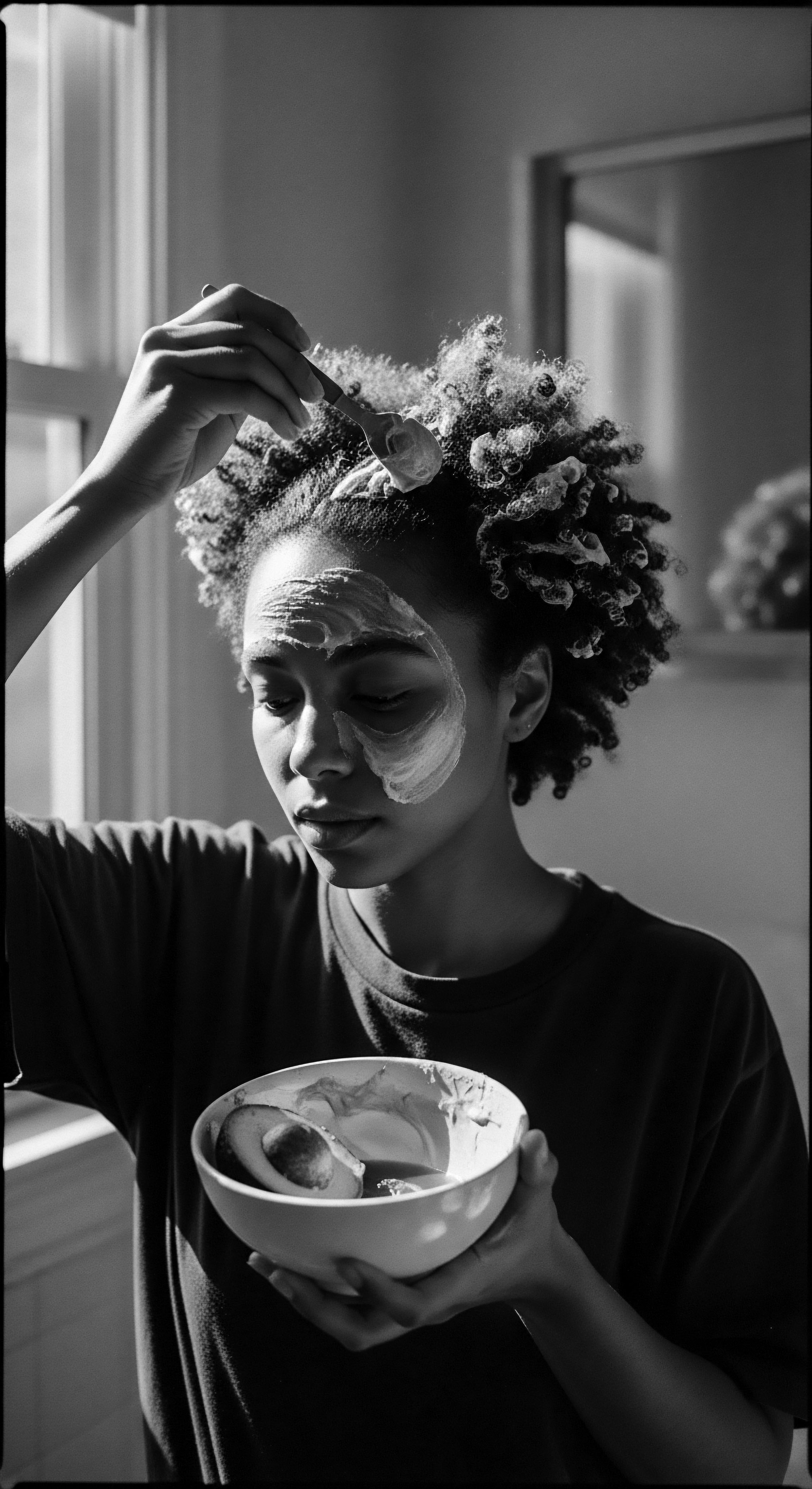
Reflection on the Heritage of Ancient Cosmetics
As we journey through the layers of ‘Ancient Cosmetics,’ a profound understanding emerges ❉ these practices are more than historical footnotes; they are living echoes from the source, resonating deeply within the Soul of a Strand. The care of textured hair, from the earliest human communities to our present moment, has always been a tender thread, woven with intention and ancestral wisdom. It speaks to a deep, intuitive science that understood the unique helical architecture of Black and mixed-race hair, long before microscopes revealed its secrets.
The legacy of Ancient Cosmetics invites us to pause and consider the hands that first crushed shea nuts, the voices that shared the properties of a rare herb, and the communal gatherings where hair became a canvas for identity and resilience. This is a story of enduring ingenuity, of communities who, despite immense challenges, preserved the knowledge of how to nurture their crowns with the Earth’s generosity. The resilience of these practices, especially in the face of forced cultural erasure, stands as a powerful testament to the unbreakable spirit of those who held their hair as a sacred connection to their past and a bold statement for their future.
Our present understanding of textured hair care, with its emphasis on moisture, protection, and gentle handling, finds its deep roots in these ancient traditions. The whispers of old remedies, the touch of a grandmother’s hands, and the shared rituals of adornment are not distant memories but active presences that guide our contemporary journey. The unbound helix of textured hair continues its spiral, carrying forward the genetic memory of ancestral care, inviting us to honor its heritage and to shape a future where every strand tells a story of strength, beauty, and belonging.
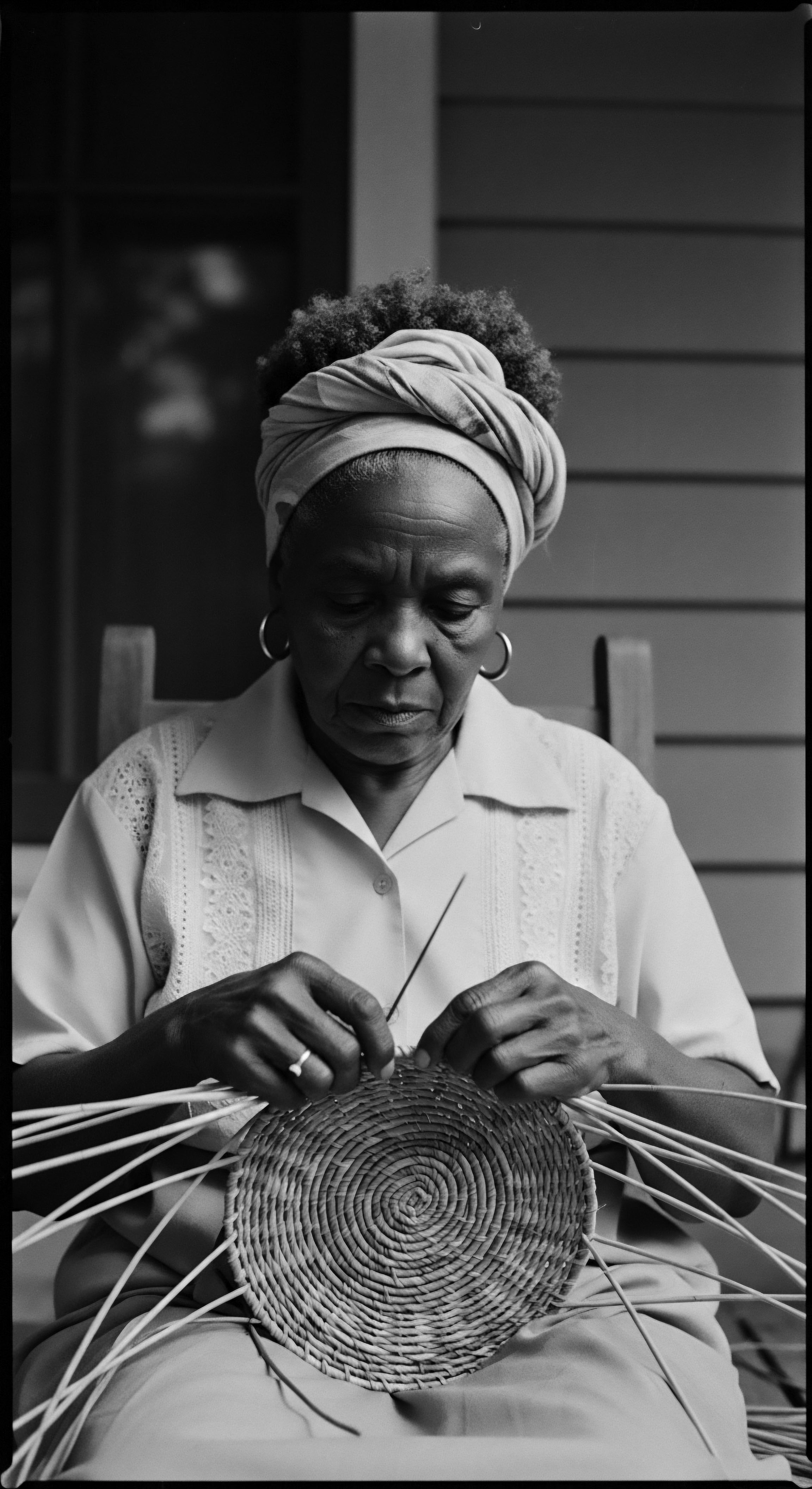
References
- Akanmori, H. (2015). Hairstyles, Traditional African. In S. K. N. G. Asante & A. Mazama (Eds.), The SAGE Encyclopedia of African Cultural Heritage in North America (pp. 440-444). SAGE Publications, Inc.
- Byrd, A. D. & Tharps, L. L. (2014). Hair Story ❉ Untangling the Roots of Black Hair in America. St. Martin’s Griffin.
- Chrisam Naturals. (2024, November 7). Chebe Powder for Hair Growth and Health.
- Loussouarn, G. & Rawadi, C. (2005). Diversity of Hair Growth Profiles. The International Society of Dermatology, 44, 6-9.
- Michaels, K. (2023, August 25). The Magic of Chebe Powder ❉ Fact or Fiction? Chebeauty.
- Petersen, S. (2022, May 14). Chébé Powder’s Ancient Roots Could Be The Key To Long, Strong Hair. The Zoe Report.
- Thompson, C. (2009). Black women, beauty, and hair as a matter of being. Women’s Studies ❉ An Inter-Disciplinary Journal, 38(8), 831-856.
